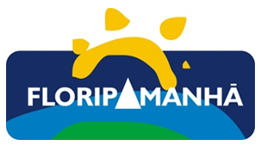Aquecimento global em debate na Capital
07/03/2008Agenda: 10 a 16 de março de 2008
07/03/2008The Beautiful South – “O belo Sul”
A beleza natural; a qualidade de vida; a cultura; as influências Européias; a geografia; os conterrâneos, como o jogador Gustavo Kuerten; o potencial turísitco; e outras riquezas Catarinenses foram a essência da matéria publicada em fevereiro pela revista americana Time.
Veja a reportagem na íntegra:
Named after the verdant hills that slope down to the Atlantic Ocean, the Emerald Coast of southern Brazil has been luring visitors for the best part of five centuries. Half of Europe seems to have some historical foothold here, be it in language, architecture, customs or cuisine. The Portuguese were the first to arrive in the 16th century, settling among indigenous Indians as they established a local whaling industry. But by the mid-1800s they had been joined by whole communities of Germans, Italians and Austrians, who came to exploit the vast virgin forestland.
The lasting effect of all these groups on the region is both endearing and surreal, and the best way to experience it is with a tour of Santa Catarina state. The heart of the region — and one of the few places in Brazil where renting a car is a good idea — Santa Catarina is a meandering mix of lush valleys, vibrant beach life and gentle fishing villages where the legacy of early pioneers lives on. From tiny Azorean settlements like the village at Armação with its colonial-style chapel, to the grand timber-framed Germanic architecture of Blumenau (home to one of the world’s biggest Oktoberfests outside Munich), the atmosphere here couldn’t differ more from northern Brazil, which is influenced by the black population and elements of African culture held over from the slave trade. There’s even a “Brazilian Tyrol” in the alpine chalets of Treze Tílias, and in the smallest rural villages, German and Italian are still spoken today.
If all this makes Santa Catarina sound a little contrived, it’s saved by the absence of mass tourism. Even with the region’s glorious climate and natural beauty, there are surprisingly few of the chain hotels, tour groups or crowded beaches that can be common up north. Life in the south is an altogether calmer experience. People here work hard, but take relaxation even more seriously.
No wonder, then, that Santa Catarina’s state capital, Florianópolis, is regularly voted best for quality of life in the country. The accolade attracts a steady flow of fashionable Paulistas (São Paulo is only an hour’s flight away), young surfers and families coming to while away their weekends at the wide sandy beaches nearby. Style and glamour are in the city’s DNA — its most famous son and daughter are tennis player Gustavo Kuerten and supermodel Gisele Bündchen. But one of the most popular hangouts is not some swanky rooftop hotel restaurant; it’s a stand-and-be-served bar in the busy fish market, known simply by its stall number: Box 32.
This laid-back tempo is dictated, in part, by geography. Floripa, as it is known to locals, is basically an island — a stretch of water cuts most of the city off from the mainland, and a bridge connects the two. With waves lapping every corner, it’s a haven for watersports enthusiasts, and kite surfers love its central lagoon. There are 42 beaches in total, many of which are only accessible by foot or boat.
Back on the mainland, drive north along the coastline road to discover some of Santa Catarina’s most tranquil bays. So small that they are often deserted, they make the perfect pit stop for a quick dip. This is also the route to the best hotel in the region — and some might say in Latin America — Ponta dos Ganchos (point of the hooks), named after the shape of the peninsula on which it’s located. Guests staying in one of the 20 clifftop cabanas can enjoy seclusion, outstanding seafood and open-air spa tents overlooking the ocean. (This is also one of the few places you can get Christian Dior beauty treatments outside France.) Rooms start at around $700 per night including meals, and at the higher end of the price range come with a private sauna, hot tub and plunge pool (www.pontadosganchos.com.br).
Ponta dos Ganchos also makes a good base for trying other activities the area is famous for. Chug out to an oyster farm with a local fisherman to taste oysters scooped straight from the sea. Hike to hidden waterfalls. Sip potent caipirinhas made with locally brewed cachaç a. Or catch a speedboat to the ancient fort on Anhatomirim Island, where the Portuguese fought both Spaniards and pirates. Nature lovers should visit Garopaba Bay, south of Florianópolis, to spot whales migrating to warmer waters between June and November. It seems even the ocean-going whale finds the Emerald Coast too alluring to ignore.
(Time, 20/02/08)

